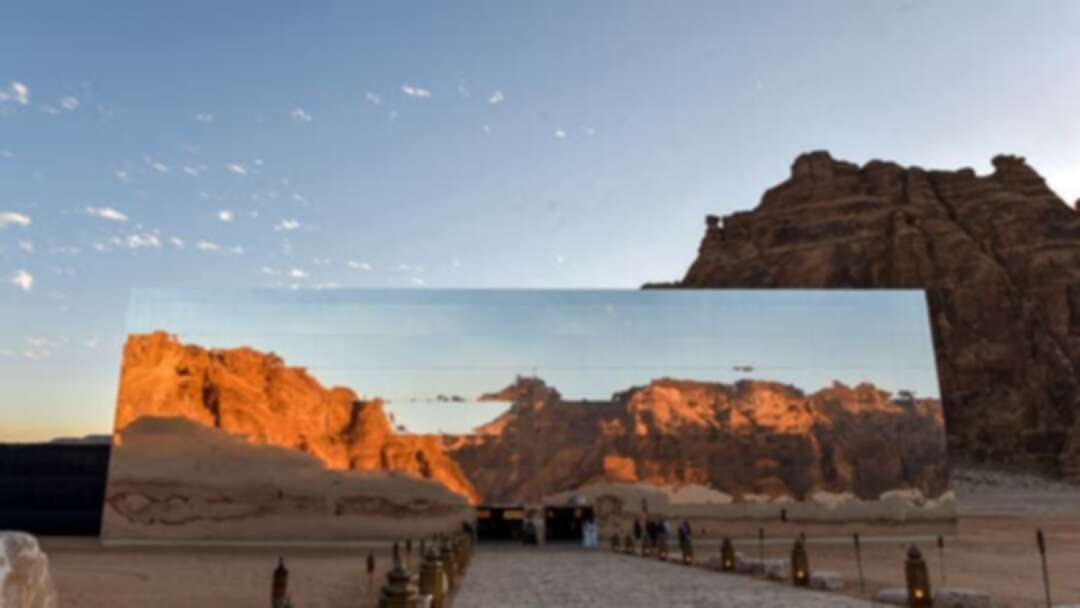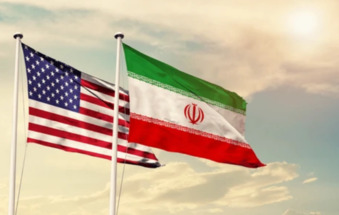-
Maraya Hall: The Guinness World Record home to the 41st GCC Summit

The Maraya Concert Hall in AlUla is playing host to the 41st Gulf Cooperation Council (GCC) Summit, with leaders from all six member states of the GCC set to attend.
The 500-seat hall hosting the delegations, Maraya, is also the Guinness World Record holder for the world’s largest mirrored building, with visitors treated to a reflection of the beautiful desert landscape of AlUla.
The special summit this year marks a new shift in relations with Qatar, whose Emir Sheikh Tamim bin Hamad al-Thani arrived on a Qatar Airways plane and was greeted by Saudi Arabia’s Crown Prince Mohammed bin Salman. The event also comes just one day after the Kingdom reopened its airspace and land and sea borders to Qatar, marking an end of a three-year boycott in diplomatic and trade ties between the two countries.
In total 9,740 square meters of mirror make up Maraya, which itself means ‘reflection’ and ‘mirror’ in Arabic.
“It represents a modern architectural masterpiece and can accommodate about five-hundred guests and provides a high-quality sound system,” the Royal Commission for al-Ula has previously said.
Maraya hall at the Winter at Tantora festival
As a concert hall, Maraya has already sought to cement its position as the center of AlUla’s cultural and arts scene. In February 2020, Maraya hosted world-famous musicians during the Winter at Tantora festival.
 Acts included a group Iranian singers who performed at Maraya. Shahram Shabpareh, Leila Forouhar, Ebi, Sasy, Shadmehr Aghili, Andy, and Arash Labaf, like other Iranian musicians are banned from performing in their own country of Iran.
Acts included a group Iranian singers who performed at Maraya. Shahram Shabpareh, Leila Forouhar, Ebi, Sasy, Shadmehr Aghili, Andy, and Arash Labaf, like other Iranian musicians are banned from performing in their own country of Iran.Acts included a group Iranian singers who performed at Maraya. Shahram Shabpareh, Leila Forouhar, Ebi, Sasy, Shadmehr Aghili, Andy, and Arash Labaf, like other Iranian musicians are banned from performing in their own country of Iran.
 An Iranian singer, Ebi Hamedi, sings at the Maraya hall during Tantora festival, in AlUla, Saudi Arabia March 6, 2020. (File photo: Reuters)
An Iranian singer, Ebi Hamedi, sings at the Maraya hall during Tantora festival, in AlUla, Saudi Arabia March 6, 2020. (File photo: Reuters)“This initiative is in line with the Kingdom of Saudi Arabia's focus on recognizing AlUla as a cradle of diverse civilisations and cultures throughout the ages, and establish the Winter at Tantora Festival as a hub for cultural fusion and a bridge for cultural dialogue, ideas exchange and transmission of culture,” the Royal Commission for al-Ula said at the time.
Maraya hall was upgraded ahead of the Winter at Tantora season, with a raft of structural improvements and renovations, with the aim of creating a large, permanent facility with upgraded acoustics.
AlUla: The home to Maraya hall
The Kingdom’s AlUla contains the UNESCO World Heritage Site of Al Hijr, the first landmark in Saudi Arabia to have been included on the UNESCO list of World Heritage Sites.
Al Hijr is the remains of a 2,000-year-old city founded by an ancient Middle Eastern people in pre-Islamic times. In the first century BC the Nabatean community made Al Hijr their second-largest city, only behind their capital of Petra in modern Jordan.
The site, also known as Madain Saleh, held a strategic location on the ancient trade route in what is now the northwestern AlUla region of Saudi Arabia. It played a key role in the frankincense and myrrh trades.
AlUla, itself is a vast area that covers over 22,500 kilometers, reopened earlier this year to tourists, and has played a central role in the Saudi Arabia’s Vision 2030 plan to boost tourism and diversify the Kingdom’s economy. AlUla is on track to become the world’s largest living museum by 2035.
source: Matthew Amlôt
Image source: AFP
Levant
You May Also Like
Popular Posts
Caricature
BENEFIT Sponsors BuildHer...
- April 23, 2025
BENEFIT, the Kingdom’s innovator and leading company in Fintech and electronic financial transactions service, has sponsored the BuildHer CityHack 2025 Hackathon, a two-day event spearheaded by the College of Engineering and Technology at the Royal University for Women (RUW).
Aimed at secondary school students, the event brought together a distinguished group of academic professionals and technology experts to mentor and inspire young participants.
More than 100 high school students from across the Kingdom of Bahrain took part in the hackathon, which featured an intensive programme of training workshops and hands-on sessions. These activities were tailored to enhance participants’ critical thinking, collaborative problem-solving, and team-building capabilities, while also encouraging the development of practical and sustainable solutions to contemporary challenges using modern technological tools.
BENEFIT’s Chief Executive Mr. Abdulwahed AlJanahi, commented: “Our support for this educational hackathon reflects our long-term strategic vision to nurture the talents of emerging national youth and empower the next generation of accomplished female leaders in technology. By fostering creativity and innovation, we aim to contribute meaningfully to Bahrain’s comprehensive development goals and align with the aspirations outlined in the Kingdom’s Vision 2030—an ambition in which BENEFIT plays a central role.”
Professor Riyadh Yousif Hamzah, President of the Royal University for Women, commented: “This initiative reflects our commitment to advancing women in STEM fields. We're cultivating a generation of creative, solution-driven female leaders who will drive national development. Our partnership with BENEFIT exemplifies the powerful synergy between academia and private sector in supporting educational innovation.”
Hanan Abdulla Hasan, Senior Manager, PR & Communication at BENEFIT, said: “We are honoured to collaborate with RUW in supporting this remarkable technology-focused event. It highlights our commitment to social responsibility, and our ongoing efforts to enhance the digital and innovation capabilities of young Bahraini women and foster their ability to harness technological tools in the service of a smarter, more sustainable future.”
For his part, Dr. Humam ElAgha, Acting Dean of the College of Engineering and Technology at the University, said: “BuildHer CityHack 2025 embodies our hands-on approach to education. By tackling real-world problems through creative thinking and sustainable solutions, we're preparing women to thrive in the knowledge economy – a cornerstone of the University's vision.”
opinion
Report
ads
Newsletter
Subscribe to our mailing list to get the new updates!






















